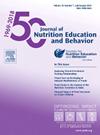Culturally-Informed Food Insecurity Screening: Evidence From Northern Navajo Medical Center
IF 2.3
3区 医学
Q2 EDUCATION, SCIENTIFIC DISCIPLINES
引用次数: 0
Abstract
Objective
To develop and evaluate an alternative strengths-based and culturally-informed screener for food security among American Indian respondents.
Design
Two-phase mixed methods sequential exploratory study with a qualitative phase followed by a quantitative phase.
Setting
Northern Navajo Medical Center.
Participants
Twenty-five qualitative participants and 97 quantitative participants.
Phenomenon of Interest
Participants’ impressions of the existing food insecurity screener compared with an alternative set of questions focused on the type and amount of food consumed.
Analysis
Cognitive interviews were thematically analyzed and integrated with mixed methods in developing the quantitative survey, and survey responses on the 2 food insecurity screening questionnaires were analyzed for equivalent-form reliability with a Pearson correlation coefficient.
Results
The prevalence of food insecurity was high. Interviewees had concerns about the existing screener. Respondents provided suggestions for alternative food security questions. When feedback was integrated into the alternative screener for the quantitative phase, the correlation between screeners was weak to moderate (0.3).
Conclusions and Implications
Findings suggest the screeners may be collecting data related to unique concepts. Rampant food insecurity supports the need for future food access initiatives in the Navajo Nation to provide a foundation for a food-secure future.
文化知情食品不安全筛查:来自北纳瓦霍医疗中心的证据。
目的:在美国印第安人受访者中开发和评估一种基于优势和文化信息的食品安全筛选方法。设计:两阶段混合方法序贯探索性研究,先定性后定量。环境:北纳瓦霍医疗中心。参与者:25名定性参与者和97名定量参与者。感兴趣的现象:参与者对现有食品不安全筛选者的印象,与另一组关注食品消费类型和数量的问题进行比较。分析:对认知访谈进行主题分析,并结合混合方法进行定量调查,对2份食品不安全筛查问卷的调查结果进行等效信度分析,采用Pearson相关系数。结果:粮食不安全发生率较高。受访者对现有的筛选程序表示担忧。答复者就其他粮食安全问题提供了建议。当反馈被整合到定量阶段的替代筛选器时,筛选器之间的相关性为弱至中等(0.3)。结论和启示:研究结果表明,筛选者可能正在收集与独特概念相关的数据。猖獗的粮食不安全支持了纳瓦霍族未来粮食获取倡议的必要性,为未来的粮食安全奠定基础。
本文章由计算机程序翻译,如有差异,请以英文原文为准。
求助全文
约1分钟内获得全文
求助全文
来源期刊
CiteScore
4.20
自引率
11.50%
发文量
379
审稿时长
44 days
期刊介绍:
The Journal of Nutrition Education and Behavior (JNEB), the official journal of the Society for Nutrition Education and Behavior, is a refereed, scientific periodical that serves as a global resource for all professionals with an interest in nutrition education; nutrition and physical activity behavior theories and intervention outcomes; complementary and alternative medicine related to nutrition behaviors; food environment; food, nutrition, and physical activity communication strategies including technology; nutrition-related economics; food safety education; and scholarship of learning related to these areas.
The purpose of JNEB is to document and disseminate original research and emerging issues and practices relevant to these areas worldwide. The Journal of Nutrition Education and Behavior welcomes evidence-based manuscripts that provide new insights and useful findings related to nutrition education research, practice and policy. The content areas of JNEB reflect the diverse interests in nutrition and physical activity related to public health, nutritional sciences, education, behavioral economics, family and consumer sciences, and eHealth, including the interests of community-based nutrition-practitioners. As the Society''s official journal, JNEB also includes policy statements, issue perspectives, position papers, and member communications.

 求助内容:
求助内容: 应助结果提醒方式:
应助结果提醒方式:


